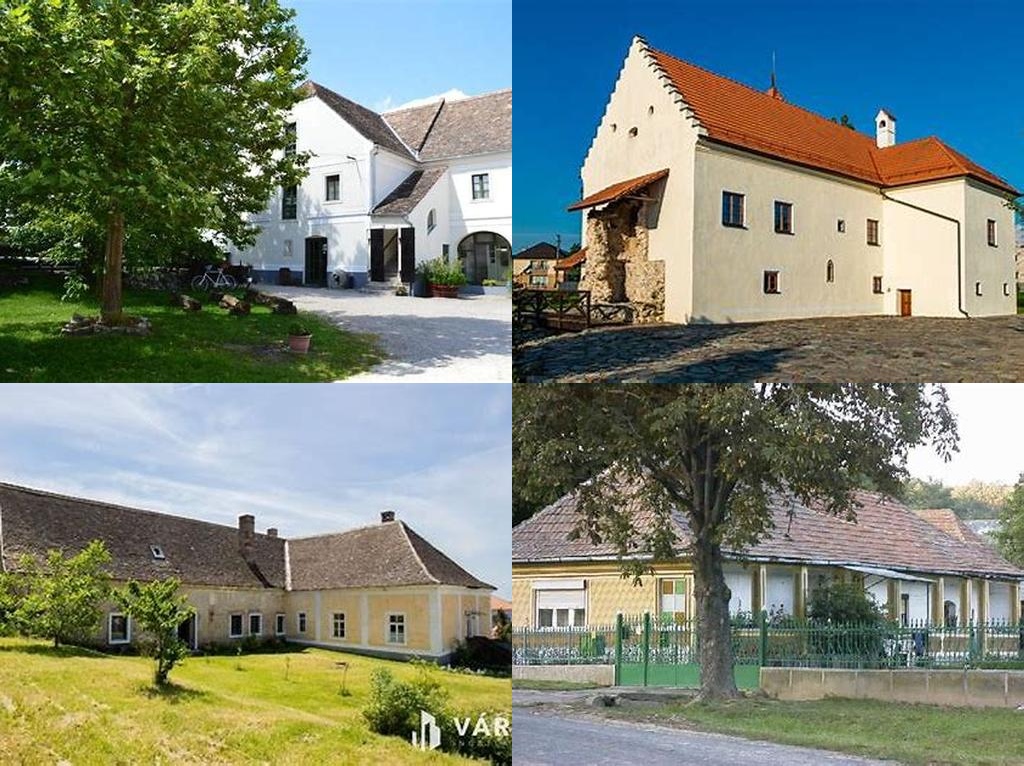
Babocsay-udvarház stands rather like an understated treasure amid the villages of southwestern Hungary, quietly watching the days pass from its place in Fony. The roads here curl through gentle hills, and there is a kind of tranquility in the village breeze. Slip away from city bustle and step into a more gracious era. What you’ll find—whether you’re a history enthusiast or just a curious wanderer—is a manor house with layers upon layers of stories, from today’s slow-moving afternoons back through centuries of family secrets and regional change.
As its name suggests, Babocsay Manor House was built and inhabited by the renowned Babocsay family. The exact beginnings of the manor are sometimes lost in the haze of time, but historians generally agree it rose to prominence in the early 1800s. Its architectural style marries classic Hungarian manor sensibilities with a touch of the quieter, more practical spirit of rural nobility. When approaching the manor, guests are often struck by its inviting, human-scaled symmetry and the subtle grace of its facade. The house doesn’t dominate its setting; rather, it seems to belong, almost as if it grew out of the surrounding countryside.
At the heart of the manor’s story are its first inhabitants. György Babocsay—one of the most influential members of the family—was known in the region not just for his wealth, but for his role as a reform-minded figure in municipal affairs. During the first half of the nineteenth century, he and his relatives played a part in shaping the cultural life and prosperity of the area around Fony, and their activities found echoes in the daily rhythms of village and rural estate alike. If you pause for a moment in the manor house’s corridors, it isn’t hard to imagine the swirl of old conversations: the scratching of quills, the debate over land rights, perhaps even the laughter following a successful harvest. Back then, such houses weren’t only homes—they were also the beating heart of rural policy and tradition.
The manor itself opens a window onto that world. The rooms—high-ceilinged, with wide windows letting in the soft Hungarian sunlight—tell their own quiet stories. Every creak of the floorboards hints at a trodden path from salon to study. Some details survive: fragments of painted plaster, original wooden beams, a beautifully preserved tiled stove in one of the corner rooms. A visitor might notice that the house feels both stately and lived-in. It is elegant, but not ostentatious; there’s a grounded warmth that persists, especially on a sunny afternoon.
In the modern era, Babocsay-udvarház has worn many hats. Surviving two world wars and the great social upheavals of the twentieth century is no small feat for any building. During periods of economic hardship, the manor was repurposed—at times serving as a school, community meeting house, and even briefly as a storehouse for grain. Each phase left its own marks, some visible, others more ephemeral. But through all the changes, the core essence of the manor has remained remarkably untouched. There’s tenderness in its survival, a sense that the village has always found new ways for the building to matter.
What brings people to Fony and its manor today? Perhaps it’s the peculiar draw of persistence—a building seemingly ordinary at first glance, but layered with stories. The grounds are simple, framed by old trees that remember more winters than most of us ever will. Sometimes local events are held under the broad branches—improvised concerts, harvest fairs, gatherings that echo the estate’s earliest days of community connection. The gardens, carefully tended (but never manicured within an inch of their lives), hum with bees and flutter with birds in spring and summer. A visit in autumn reveals the lawns blanketed with golden leaves, everything set aglow in the honeyed light of the season.
People who travel here often mention that there’s something quietly contemplative about the house. It isn’t a showy palace vying for attention; it is a home, wrapped in memory. If you take time to talk with locals, you might learn tales passed down through generations—stories of family dinners, of courageous acts during hard times, of weddings and farewells all beneath the same timbered beams. It’s not the grand sweep of Hungarian history in textbook form, but the history that grows from soil and people and aging walls.
So, for those who find themselves wandering through Hungary’s lesser-known corners, a pause at Babocsay-udvarház is a gentle antidote to the bustle of more famous attractions. Here, instead, is the pleasure of slow exploration: an invitation to step softly into the rooms where György Babocsay might once have paced, where generations dreamed forward and backward. It’s well worth a visit—not for spectacle, but for the comfort of truly lived history.





